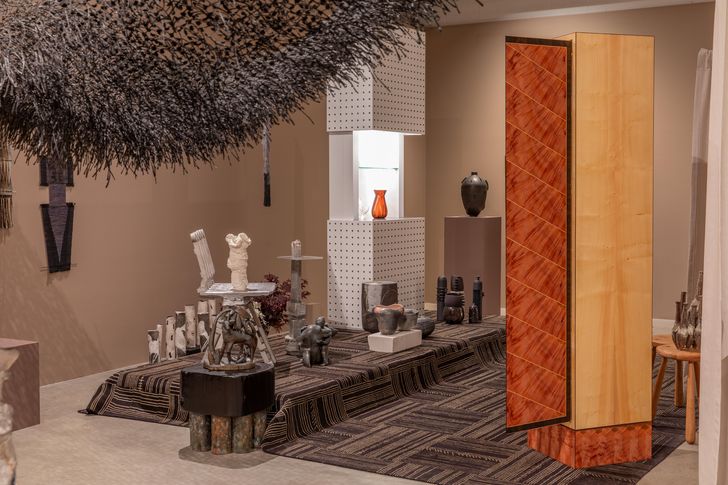[ad_1]
Timelessness is a quality interior designer Simone Haag believes in – and if one thing has stood the test of time, then it’s surely our fascination with fables. Our folklore reflects our interests, lets us ask questions, experiment with new ways of thinking, and articulate our fears and dreams. These stories connect us to our past and help us test our hopes for the future.
The works Haag has assembled in Craft Victoria’s latest exhibition, Fables and Folklore, pay homage to the infinite value of storytelling and, by turn, delve into elements of particular myths, honour the physical structures that have traditionally hosted the telling of tales, and carve out new trajectories for design practice through material and conceptual experimentation.
It’s a diverse and eclectic show – and the richly textured forms within the cool grotto-like volume of the Craft Victoria gallery imbue the exhibition with a particular Aladdin’s Cave-like quality. With over 150 works from across furniture, lighting, textile and ceramic design, the singular chair is a recurring theme. Our societal fascination with the sinister side of Australian culture and the darkest corners of the Australian landscape is explored in designer Trent Jansen’s Swamp Creature chair whose bulging curves and wrinkled skin evoke a beast risen from the mud. Meanwhile, furniture marker Scotty Bemelen’s Barely Contained chair honours the humble seat from which many a storyteller told their tales, paying homage to oral tradition.
Several textile designers are represented in the mix, with Camille Laddawan’s wall hangings and Jenny Jones’s exquisite hand-knotted rugs offering compelling invitations to look closer. Beyond the immediate graphic appeal of Laddawan’s beaded pieces lie various stories passed down through her family, embedded into the textiles in code. Her tapestries speak to the complexity of her background as maker, as well as of the work’s laborious making.
Across the show, two works in particular foreground the possibility of alternate worlds. The glow of Studio Kaytar’s metal, flax and beeswax table lamps suggest the existence of an inner spirit, and Anton Gerner’s whimsically retrofuturistic Sculptural Cabinet – meticulous in construction – seems almost as if it contains a separate plane of existence, deep within its geometry.
Furniture maker Andrew Carvolth is known for his interest in material reuse and has two chairs in the exhibition. Both make visible use of aluminium castings and tailings discarded by local foundries and draw attention how we, as designers, might evolve more responsible modes of practice.
The complexity of interests, influences and techniques showcased in Fables and Folklore speaks to the diversity of the Australian design community and the depth of exploration that is driving the trajectories of many established and emerging practitioners across the country. The exhibition is also a nod to the home as a collection of objects – stories carefully gathered and conscientiously placed – that reminds us who we are, and shape who we can be.
[ad_2]
Source link















